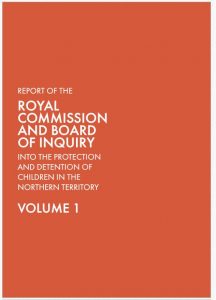 In June 2016, the Australian Broadcasting Corporation showed an investigation report into the detention of children who had broken the law in the Northern Territory. The revelations of maltreatment were so confronting that a Royal Commission was announced by the Australian Government very shortly after. The Commission’s final report was tabled in Parliament on November 17 2017.
In June 2016, the Australian Broadcasting Corporation showed an investigation report into the detention of children who had broken the law in the Northern Territory. The revelations of maltreatment were so confronting that a Royal Commission was announced by the Australian Government very shortly after. The Commission’s final report was tabled in Parliament on November 17 2017.
All Australian workplaces are subject to clear occupational health and safety duties and obligations that relate to workers and to those who may be affected by the workplace and activities. (The SafetyAtWorkBlog article “Royal Commission into juvenile detention should include OHS” discusses this at length.)
A brief search of the Final Report of the Royal Commission into the Protection and Detention of Children in the Northern Territory shows an acknowledgement of the OHS perspective but with little discussion of it. Continue reading “Detention Royal Commission touches on workplace safety”



 The Queensland Government is in the middle of a debate in Parliament and the media about the introduction of
The Queensland Government is in the middle of a debate in Parliament and the media about the introduction of